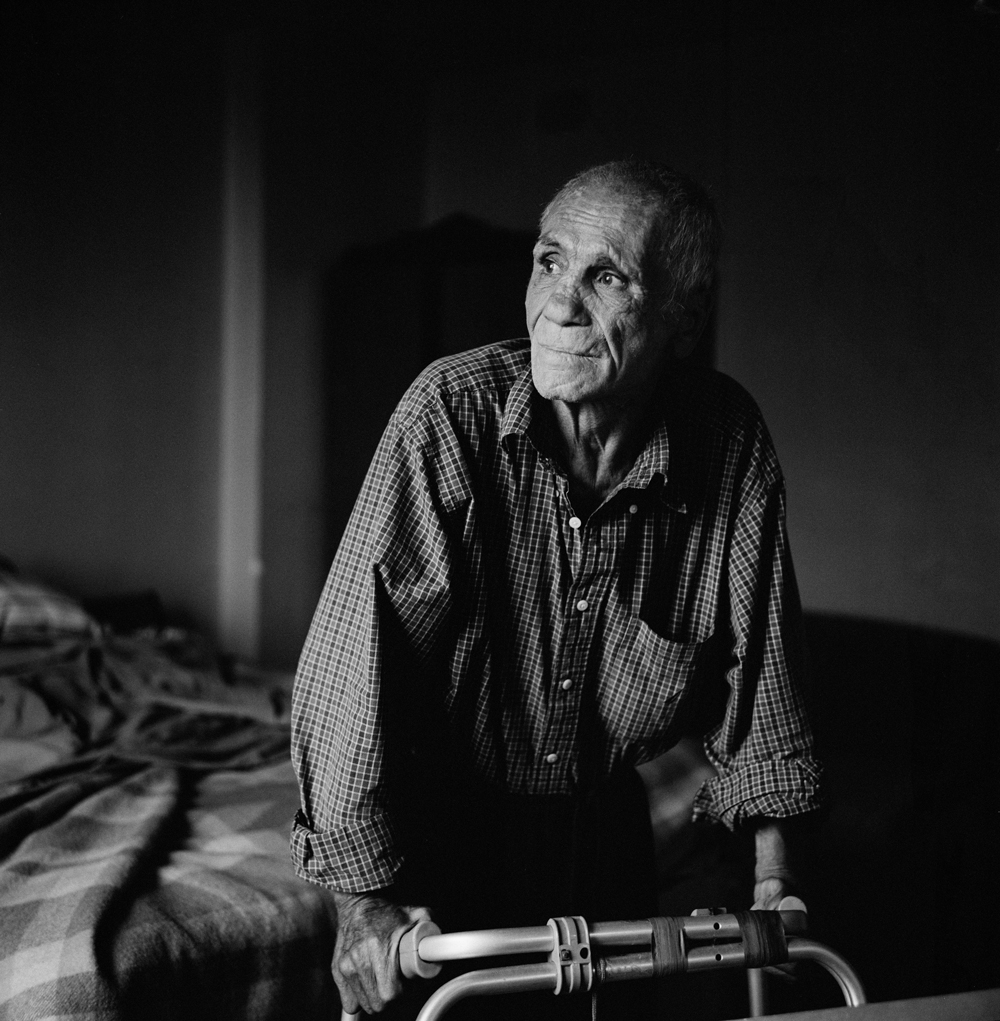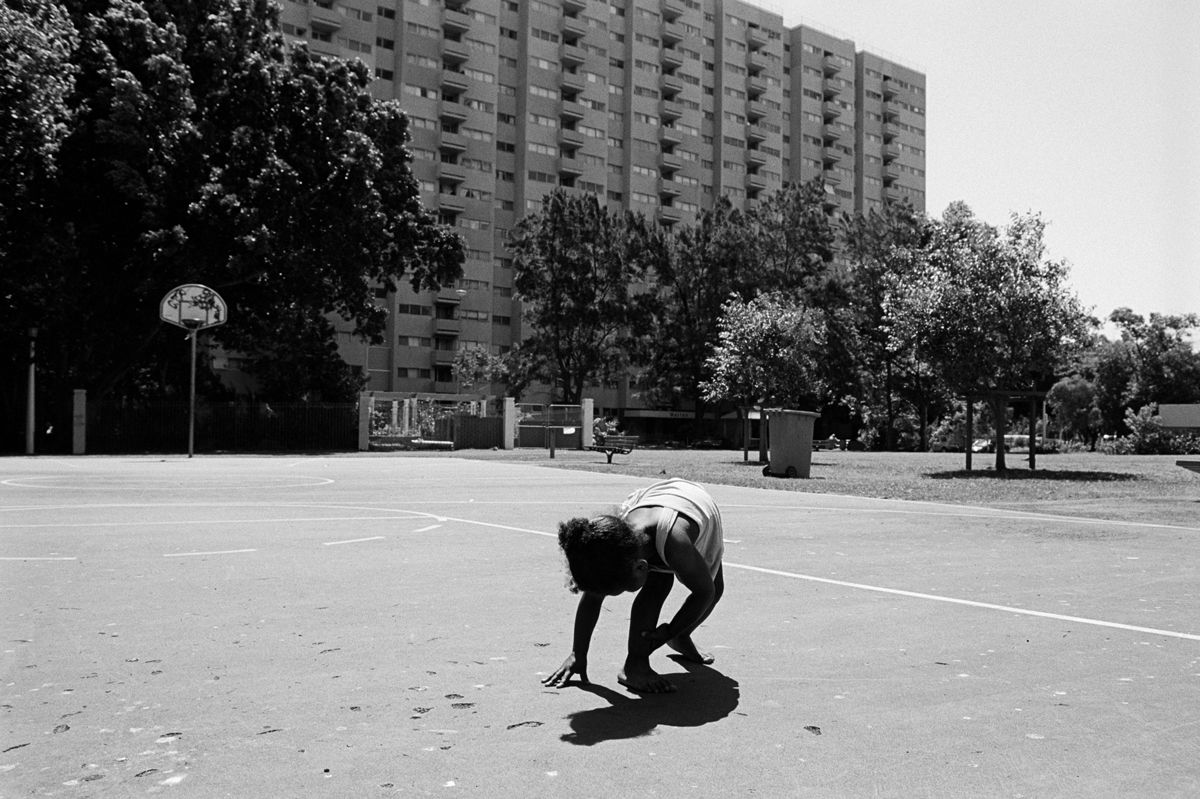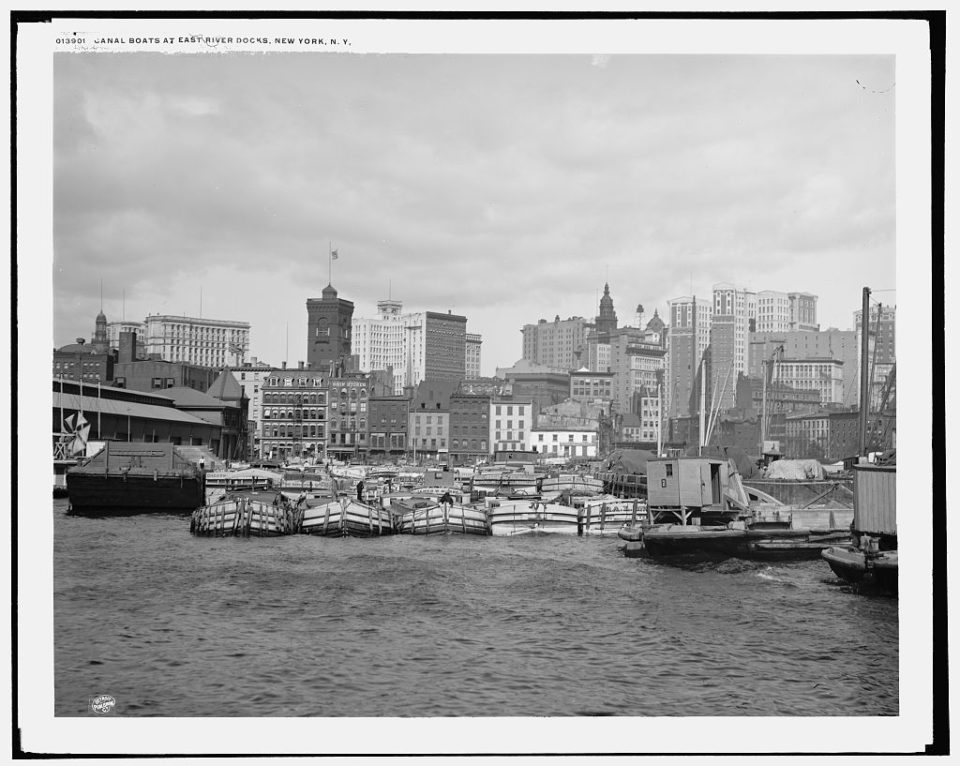Waterloo, Christmas, 2015. A letter from Brad Hazzard, then NSW Minister for Social Housing, is inserted into tenants’ mailboxes across the Waterloo Estate. “Dear Tenant, I am excited to write to you…” it begins, before going on to outline that a new Sydney Metro station at Waterloo would be the catalyst for “building a dynamic new community with great transport, better homes, better facilities and more jobs.”
A few paragraphs in was the information that compulsory relocations were to start in mid-2017. Tenants could return, if they wanted, as the staged redevelopment was completed over fifteen to twenty years.
At a poorly stage-managed event the following February, Hazzard told residents that he wanted to give Waterloo a slightly more “real” feel. A Current Affair, taking the side of the people it ordinarily cast as druggies and ne’er-do-wells, was there to capture the antipathy of residents as they hounded him off into a government car.
Opened in 1977 by Queen Elizabeth II, the iconic Matavai and Turanga towers that dominate Waterloo are now considered ‘ageing stock’ in NSW parlance – and will be ‘recycled’ along with the four other towers, Cook, Banks, Solander and Marton and the rest of the walk-up public housing in the area.
For many, the two grey monoliths will always be ‘Suicide Towers’, a place where street drinkers and drug users who refuse to shape up, ship off. It’s a jaundiced view of the place that refuses to be scrubbed out. Street drinking is still a thing here, but so it is at Vivid.
Wrapped around the towers is the Waterloo Green, an open unaffected community space. “Free space,” one tenant calls it. There is no public art. No ‘placemaking’ local history filler to decorate its basic purpose. And yet its purpose bears fruit. “I’ve never seen anything like it before,” says Richard Weeks, 70, of the Waterloo Public Housing Action Group (WPHAG), an association that owes its inception to that first Christmas “letter bomb” informing them of the relocations. “If you come down here on the weekend you see families from around here – not only the people from the buildings – some people from the private sector come down here!”
Built with government money and a community vision, the towers and the Green were conceived in a period before the metes and bounds of economic rationalism unpicked the welfare state, of which it is now a relic.
On the Green, people yell out to each other with chaotic regularity. “The closer you get to the Station,” one resident says, “that interconnectedness isn’t as apparent. People aren’t saying hello as often.”
It is hard to imagine a more interconnected group of people than that which exists within the eighteen hectares between Phillip, Cope, McEvoy and Pitt Street in Sydney’s Waterloo.
For the job-to-home crowd, plugged into the wage-earner relay system of mass-transit that reaches it terminus in the CBD, connectedness is only a means to an end. There, the State Government’s hymn sheet of ‘Jobs, Infrastructure and Housing’ tuned to the endless ‘beeps’ of Opal cards – all in the hope of a better tomorrow. Pray then, for working parents and pensioners who, according to the Rental Affordability Index, have now been “priced out” of every metropolitan centre across Australia today.
“Last week I saw a tent in Sydenham going for $100 a week on condition that you were neat and tidy,” a tenant of Matavai informs me. A diehard Rabbitohs fan, he says, “If that’s the future that Australians want, then continue to sit in the stands. If not, come out of the stands and join us on the field. Because this social housing safety net is what we all share – and we want it to be there for others, not just ourselves.”
In the coming decades, Waterloo will be repurposed to serve multiple state policy objectives as a ‘socially mixed’ precinct with a 70 percent privately owned or tenanted. The rest will be reserved for socially rented units operated by private sector community housing providers.
Social mix is a concept imported largely from the US. It deploys the contentious claim that wealthy people, by example, show the poor how to succeed. “I didn’t plan on ending up in housing commission,” Richard Weeks tells me, after outlining the kind of family tragedy that can befall anyone. “I had a house worth a couple of million dollars.”
The thousands of self-starters inbound at Waterloo Metro are supposed to mean that systemic disadvantage will soon be cured by proximity and osmosis, not more government money.
One of the reasons for the Hong-Kong levels of density being considered for Waterloo is that developers tasked with reconstructing the thousands of social housing dwellings on the estate must do so without direct investment from government. The equation requires big money, big blocks and a big chunk of government land alienated. All of which will meet the Holy Grail of better government service provision: ‘cost neutrality’.
“One of the things about these big redevelopments is that they couch them in political terms as being about social objectives – addressing concentrations of disadvantage, improving the lives of residents, getting people jobs – but when you look at the mechanics of them they’re actually financial questions,” says Dallas Rogers of the University of Sydney, who specialises in the upheaval of urban environments in global cities. The prevailing question always being: “How do we increase the land value?”

George Tino at home in the McKell Building, Redfern 2007. Photography by Tom Williams
Back in 2015 when the new metro station was first announced, Robert Harley of the Australian Financial Review cited Mirvac and Deicorp, as well as the Chinese developers JQZ and Dahua, as companies with interests surrounding the Waterloo Estate. “The decision will benefit a number of developers already working on projects in the area and those keen to work in the future on the redevelopment of one of Sydney’s largest social housing estates,” he divined.
The median house price in Waterloo is $1.2 million. In the southern end of the suburb, Crown Group are building the $395 million luxury apartment complex, ‘Waterfall.’ The ‘urban sanctuary’ boasts a rooftop infinity pool, wall-to-wall foliage and a bamboo walkway for that indisputable Bali vibe.
As part of his itinerary as chairman of WPHAG, Richard Weeks travelled out to Airds in the city’s south-west to inspect one of newest of NSW’s newly redeveloped social housing estates, ‘Newbrook’. To his horror, he discovered not a sanctuary but a cannery. “There was no thought given to the human aspect of it,” he says, recalling four children scurrying about their new dugout several blocks from the nearest park. “It was all about economy and getting more in there. Don’t worry about how they’re going to live, just pack ‘em in.”
The human aspect is the first thing cannibalised when a territory like the Waterloo Estate is mapped out on a State Environmental Planning Policy as a ‘Growth Centre’ or ‘State Significant Precinct’. Unlike Airds, Ivanhoe, Bonnyrigg or Minto, where renewal has already made its mark, Waterloo is on a scale that is unprecedented.
“It’s like landing a spaceship,” says architect Genevieve Murray of design studio, Future Method, pointing to other large head-in-the-sand redevelopments that omit the community surrounding it by design.
Landing this spaceship is terrestrial landlord, the NSW Land and Housing Corporation (LAHC), which is currently running ‘visioning’ workshops with residents on the estate. “It’s a ridiculous question to ask people,” says Richard Weeks of the workshops, “because they’ve got no visuals.”
Addressing this, Genevieve Murray is heading a participatory design process with a group of residents, architects, activists and artists in a LAHC-provided space on the estate. “If they could take the risk of giving over some power in that process they might have some chance at achieving some good social mix,” she says. Their team will build a 3D model of the entire estate for residents to start placing their needs in some perspective.
The community project is just one limb of a Leviathan of residents’ groups, tenants’ boards, NGO coalitions and local publications that serve Redfern-Waterloo, the most organised community of its size in Australia. Just over the hill is the birthplace of Indigenous self-determination in this country, the Block. Just across the street the Green Ban battles of the ‘60s and ‘70s raged successfully against the development aspirations of the Askin Labor government. All around here, people fought and drank and marched for the survival of their historic rugby league team.
“You’ve got twenty-seven nationalities here in Waterloo,” says Weeks, in one of his favourite paeans to the local constituency, “and just about every religion, except Scientology – they’re not here because there’s no money – and there’s never been a problem here over race or religion.”
Despite its strength and forbearance, the community consistently battles being no-platformed through ‘community engagement’ or ‘consultation’, something it has seen more of in the past two decades than hot dinners.
“Instead of people that are involved in community engagement you have communications people and they’ve got an agenda and a message to sell,” says Geoff Turnbull of Inner City Voice and resident brains trust of Redfern-Waterloo, who has lived and worked in the area since the late ‘70s.
Turnbull has seen the entire gamut of intervention, from the mild tyranny of former Labor minister Frank Sartor and the abolished Redfern-Waterloo Authority to the appeasement by sausages and balloons practiced by subsequent government developers.
Speaking in late May, Geoff Turnbull reminds me that after nearly a year and a half of painful speculation and conspiracy theories, “There is as good as no more information now than what there was when it was announced.”
The grand conspiracy theory says gaps in public knowledge quarantine resistance into manageable outbreaks. The incompleteness of ‘the plan’ is its virtue. With each new piece of the puzzle the best and worst case scenario grow closer, until in the end a grand compromise is loosed upon the world.
If a compromise like that which befell the good people of Airds was dealt out to the several thousand residents of Waterloo, the government of the day can expect more than mild opprobrium. The history of Redfern-Waterloo in one of resistance – black, white and Green.
In July, bulldozers will begin ripping down an adjacent block to make way for the new Waterloo Metro station, the original ‘catalyst’ for this urban renewal. The government is investigating whether to apply a Special Infrastructure Contribution for the Waterloo Metro, an additional charge on developers who are already, in theory, funding the reconstruction of 2,000 plus social housing units. If the ‘pays for itself’ equation of public-private partnerships is to be adhered to, it could stretch the densities required beyond anything seen in Australia before.
“Wall-to-wall high-rise and no green space,” goes the Waterloo tenant’s lament, an ever-present and ever-pertinent warning against compromise. “No barbeques. No community rooms…”
In the end, the objective of seeking better social outcomes could be jeopardised by the very thing that was meant to make achieving them possible – a Metro station. “Jobs, infrastructure, housing,” sings the government to the dutiful chorus of Opal cards concurring a thousand times a second at $3.38 a ping.
A long winter of morning teas and sausage sizzles at Waterloo awaits.






